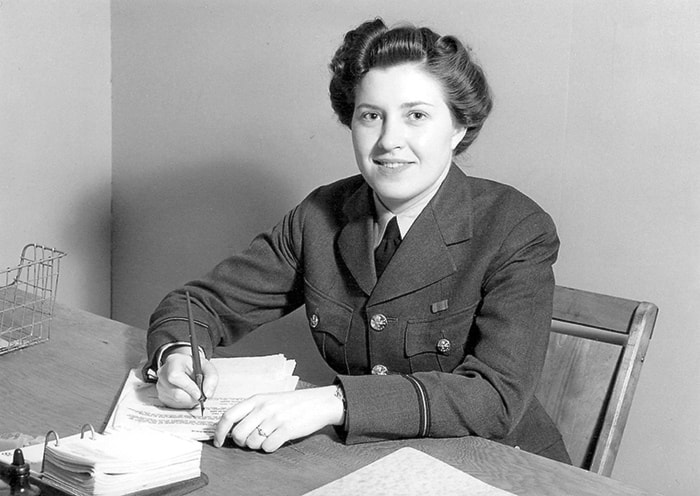Canada has been involved in various wars from the beginning of its colonial history.
As the nature of war has changed over time, so has the effect on Canadian women.
Into the 20th Century, factors including the distance of conflicts and restrictive ideas about women’s abilities combined to prevent direct involvement by women as combatants.
However, during both the First and Second World Wars, women actively participated.
Over 45,000 Canadian women were organized into army and air force auxiliaries in 1941, with the naval auxiliary established the following year.
In the United Kingdom, women participated in the war effort from the start.
Women in both Canada and the U.K. did not participate in combat roles; rather they freed men from war-related work.
Many women performed clerical duties, such as maintaining service records or payroll. Some worked with machinery, such as aircraft maintenance or monitoring ships through radar, while others joined the essential services, working as cooks or vehicle drivers.
The Royal Canadian Air Force Women’s Division was created in February 1942 so that women could take over non-combat roles, freeing up men to fight.
This was made apparent by the motto of the women’s division, which read: “They serve so that men may fly.”
Nearly 18,000 Canadian women joined the division before the end of the war, composing eight per cent of the total RCAF personnel.
The women’s division was disbanded after the war in 1946, but was reborn in 1951, and in 1968 was integrated with the RCAF.
Many women from Maple Ridge enlisted in the women’s division, including Harmony Cardinell, Marjory Saunders, Doris Hawkes, and Ruth Kinsman.
Marjory Saunders served as a wireless operator out of Prince Rupert. She was also known for being an excellent rifle shot, winning the Dominion Marksman Expert Shield in 1942.
In addition to the women’s division, women also had the opportunity to join the army and the navy through the creation of the Women’s Royal Canadian Naval Service and the Canadian Women’s Army Corps.
The Women’s Royal Canadian Naval Service was created in 1942. Originally, women were needed to fill about a dozen duties, including clerical work, telephone operations, and coder duties. But the number of available jobs was increased to 35 by the end of the war and later included communications and operations specialists, recruiters, and attendants.
By 1945, 6,500 women had joined the WRENS, with 1,000 serving abroad in the US and in Britain.
The Canadian Women’s Army Corps was established in August 1941 for much the same reason: to serve in non-combat support roles for the armed forces.
In 1942, CWAC was integrated into the rest of the Canadian army, and offered women opportunity to serve in 30 roles. This number was later increased to 55. Women worked in clerical and administrative work, in ciphering and decoding, and in vehicle maintenance.
The majority worked in Canada, but many, such as Maple Ridge’s Hester O’Reilly, were sent overseas to both Britain and mainland Europe, where they worked after the war to aid in repatriation of the army.
In total, about 22,000 women joined CWAC, with 3,000 serving overseas.
Both CWAC and WRENS were disbanded in 1946.
Several women from Maple Ridge enlisted in these two organizations, including Alice Godden and Isabell Pullen for WRENS, and Mary Cuddeford, Margaret Mattson (need Leaf) and Lucille Mockford for CWAC.
Despite women’s contributions to Canada’s military efforts in the 20th Century, they were not allowed full entry into the armed forces until the late 1980s.
Canada only opened all military positions to women in 1989 (except for submarines, which admitted women in 2000). As of 2013, women made up over 12 per cent of the Canadian Armed Forces.
– By Allison White, curator of the Maple Ridge Museum.
